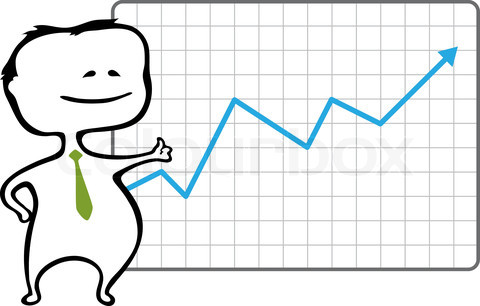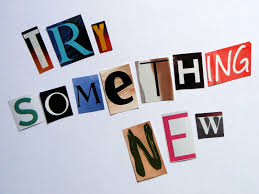SMILES😄
SMILES??? What is SMILES actually?
Here is the SMILES.👆
Nah! Not that one. This SMILES stands for 'Simplified Molecular Input Line Entry System'. It is used to translate a chemical's 3-D structure into a string of symbols that is easily understood by computer software.SMILES notation is used to enter chemical structure into EPI Suite estimation programs and ECOSAR. Additional examples of SMILES notations are available in the HELP files of EPI Suite and ECOSAR. SMILES strings can be imported by most molecule editors for conversion into 2-D drawings or 3-D models of the molecules.
Below are the examples of SMILES notation for some molecules.
Molecules
|
Condensed Structures
|
SMILES notations
|
ethane
|
CH3CH3
|
CC
|
dimethyl ether
|
CH3OCH3
|
COC
|
formaldehyde
|
CH2O
|
C=O
|
natrium chloride
|
NaCl
|
[Na+][Cl-]
|
formic acid
|
HCOOH
|
O=CO
|
molecular hydrogen
|
H2
|
[H][H]
|
ethylene
|
CH2=CH2
|
C=C
|
ethanol
|
CH3CH2OH
|
CCO
|
carbon dioxide
|
CO2
|
O=C=O
|
Hydrogen cyanide
|
HCN
|
C#N
|
For easier understanding, here is some representations in SMILES notation.
Atomic symbol:
C methane,CH4
O water,H2O
S hydrogen sulfite,H2S
N ammonia,NH3
P phosphine,PH3
Cl hydrogen chloride,HCl
Bond(s):
− single
= double
# triple
: aromatic
Branches:
- enclosed in parentheses"( )"
e.g. CC(C)C(=O)O for isobutric acid with RN 79-31-2
-also can be nested or stacked
e.g. C=CC(CCC)C(C(C)C)CCC for 3-propyl 4-isopropyl 1-heptene
Cyclic Structures:
- breaking of one single or double(aromatic) bond in each ring.
- the bonds are numbered in any order, designating ring opening/ closure by a digit immediately following the atomic symbol at each ring closure
-each SMILES notation will start and end with C1
TIPS:
*usually hydrogen is not shown
*elements must be shown in bracket, e.g. [Au] for gold
*single bond & aromatic bonds doesn't need to be written
*aromatic carbon is indicated by lower case
*a molecule can has more than one valid notation,e.g. CC(=O)C and O=C(C)C both for acetone
*symbol asterisks '' * '' indicate where each SMILES notation begin
Colour psychology
Choosing the right colours is a very important part in presentation. This is due to the psychological effects that colours leave on us. It can change our mood in a matter of
seconds, without us even realizing it. While it’s a powerful tool to
wield in your PowerPoint presentations, making it more interesting and can also support the contents of our presentation. Different colours leave different impacts on us. Therefore we should use the right colours and combinations in our presentations based on the topic of our presentation.
Apart from presentations, colours also play a great role in marketing. Big companies carefully selected the colours of their logo.
❤ "Colour psychology" was Posted On: Thursday, March 9, 2017 @8:25 AM | 0 lovely comments ✿
Graphs and Linear and Non-Linear Fit
 |
| (Credits to the owner) |
To create the graph, we need to have the variables of data in a table. From the data, only then we can make the graph.
If we are using Microsoft Excel as our program, we can find the standard deviation, variance and average by just inserting these following keys into the cells;
Standard Deviation : =STDEV(insert cell number)
Variance : =VAR(insert cell number)
Average : =AVERAGE(insert cell number)
The following image are the example on how to search for the variance.
After finding the variance,standard deviation and average of the data, we can continue with our graph. Choose the scattered form of graph. From the graph that has been plotted, we can make the linear regression or non-linear regression.But, what is linear and non-linear regression?
 |
| Non-linear regression |
 |
| Linear regression |
Linear regression is the curve fitting for relationships that are best approximated by a straight line, while non-linear regression is the variables that are best approximated by a curved.
From the regression, we can find the correlation coefficient, r , whereby, if the r is positive, it means that it has a positive linear correlation, and if the r is negative, it means that it is a negative linear correlation. Next, we can also search the coefficient of determination, r squared , that shows us the fluctuation of one variable compared to another variable. It shows us the percent of data that is the closest to the line of best fit. For example, if the r is 0.5. the r squared is 0.25.This means that only 25% of the total variation can be explained between the relationship of the variables, while the remainder of 85% is still remained unexplained.
To conclude, the graph can simply be made just by completing the data of variables, and just from the graph, there are so many information that can be spelled out in order for us to know them. We do not need to use the calculator to find the answers, but all we need to do is to learn on how to use the technology, and our life will be easier ☺.
❤ "Graphs and Linear and Non-Linear Fit" was Posted On: Thursday, March 2, 2017 @8:49 AM | 0 lovely comments ✿
What is IP address?
Let us check out what is the IP address...
What Is an IP Address?
IP stands for Internet Protocol. An IP address is a binary number that uniquely identifies computers and other devices on a TCP/IP network. IP (pronounced eye-pea) stands for Internet Protocol. Every machine in a network have their own unique identifier including computers, phones, printers, and Internet of Things (IoT) gadgets, receives an IP address. Just like our fingerprints that are different from each other even the twins.
What are the importance of an IP address?
An IP address serves two primary functions. It is used as an interface identification for a network of machines(even a machine needs ID😃) Besides, it also serves to provide a location of that machine, much like a physical address for a home or business.tat is how we can detect who and where any activities using the network is done. Because an IP address is a unique identifier, it allows computers to send and receive information to and from specific computers in a given network. Imagine, how can information transfer occur if the is no specific address. If we can related to our daily life, a postman cannot send the mail or parcel with no address.
What are the types of IP address?
IP address can be divided into two, which are public address and private address. Public address is considered as any valid address assigned to any user, and the organizations who is responsible for registering IP ranges called Internet Service Providers (ISPs),and this address is unique.In simpler words, public IP address is for use on the Internet or other wide area network (WAN). Meanwhile, private address is assigned to a device on a private TCP/IP. For instance, Local Area Network (LAN) is only accessible within the LAN.
Two IP addressing standards are in use today. The IPv4 standard is most familiar to people and supported everywhere on the Internet, but the newer IPv6 standard is gradually replacing it. IPv4 addresses consist of four bytes (32 bits), while IPv6 addresses are 16 bytes (128 bits) long.
An IPv4 address consists of a group of four numbers, each between 0 and 255. Computers store and work with an IP address as one combined (binary) value, but network devices displays them in human-readable forms. IPv4 uses dots to separate the individual numbers that range from 0.0.0.0 to 255.255.255.255. IPv6 uses colons instead of dots to separate the numbers and also uses hexadecimal rather than decimal digits.
To simplify:
IP address and domain name. What is the connection between these two?
IP address is an actual set of numerical instructions. It communicates exact information about the address in a way that is useful to the computer but cannot be understand or used by humans.
Domain Name System (DNS) acts as translator between IP address and domain name.
Domain names function on the Internet in a manner similar to a physical address in the physical world that can be understand by humans. Each part of the domain name provides specific information. For example, www.blogger.com, is comprised of three essential parts:
- .com - This is the top-level domain.
- .blogger. - This is a sub-domain.
- www. - This is a sub-domain prefix for the World Wide Web. The original use of this prefix was partly accidental, and pronunciation difficulties raised interest in creating viable alternatives.
Here are some examples of top-level domain (TLD):
How can we convert an IP address from 32-bits of binary numbers into dotted decimal format?
01011110000101001100001111011100
Step 1: divide the binary number into 4 groups of octets.
a) 01011110
b) 00010100
c) 11000011
d) 11011100
Step 2: since every group is octet,
2⁷ 2⁶ 2⁵ 2⁴ 2³ 2² 2¹ 2⁰
128 64 32 16 8 4 2 1
Step 3: Compare the sequence and get the total values of meaningful binary number which is 1
a) 64 +16+8+4+2=94
b) 16+4=20
c) 128+64+2+1=195
d) 128+64+16+8+4=220
Step 4: Write in decimal notation
94.20.195.220
 |
| you can try to convert by your own instead of using converter👋 |
❤ "What is IP address?" was Posted On: Thursday, February 23, 2017 @8:35 AM | 0 lovely comments ✿
What is Internet?
 |
| thinking patrick ahahaha |
Have you ever wondered how the Internet we
use now came about in the world of technology?
How it magically makes our lives
a thousand times easier nowadays? We could literally find information about
anything in just a matter of seconds and thanks to this wonderful thing called Internet, you're reading this blog right now.
Well let us all thank Dr. Vinton Cerf, the
father/co-founder of Internet innovation.
First thing first, what exactly is the
Internet?
It is a form of network that connects a
series of computers or electrical devices from around the world into one vast
global connection called the Internet.
It uses TCP/IP protocols and packet switching. It
enables the sharing of information across the globe that can be done through our
fingertips.
The History of the Internet
It starts off with Victorian Internet that
used Morse Code as a form of communication.
Then, the evolution begin!
Because of internet, some challenges had been solved,
- survivebility of infrastructure to send and receive high speed electronic messaging
- reliability of computer messaging
These people are the behind of all this brilliant work invention . They deserve recognition and our gratitude. We will pay tribute to several of the people who made the Internet and World Wide Web possible.
THE INTERNET WAS UP AND RUNNING
.....and begin to growth
In 2001, over 150 - 175 million host on the Internet and increased up to 200 million host over a year. By 2010, about 80% of the planet will be on the internet.
Without the Internet, you would not have a thing like Facebook, Twitter, YouTube.
And way more importantly, we would
not be able to access information in seconds, we would not be able to communicate to the people from around the world, share ideas and educate those who might not be able have the chances of the square.
Without Internet, I actually have to talk to someone when I order a pizza which by the way it was the first thing I bought using the Internet.
HOW WOULD YOUR LIFE BE DIFFERENT WITHOUT THE INTERNET?
« Older posts
SMILES😄
SMILES??? What is SMILES actually?
Here is the SMILES.👆
Nah! Not that one. This SMILES stands for 'Simplified Molecular Input Line Entry System'. It is used to translate a chemical's 3-D structure into a string of symbols that is easily understood by computer software.SMILES notation is used to enter chemical structure into EPI Suite estimation programs and ECOSAR. Additional examples of SMILES notations are available in the HELP files of EPI Suite and ECOSAR. SMILES strings can be imported by most molecule editors for conversion into 2-D drawings or 3-D models of the molecules.
Below are the examples of SMILES notation for some molecules.
Molecules
|
Condensed Structures
|
SMILES notations
|
ethane
|
CH3CH3
|
CC
|
dimethyl ether
|
CH3OCH3
|
COC
|
formaldehyde
|
CH2O
|
C=O
|
natrium chloride
|
NaCl
|
[Na+][Cl-]
|
formic acid
|
HCOOH
|
O=CO
|
molecular hydrogen
|
H2
|
[H][H]
|
ethylene
|
CH2=CH2
|
C=C
|
ethanol
|
CH3CH2OH
|
CCO
|
carbon dioxide
|
CO2
|
O=C=O
|
Hydrogen cyanide
|
HCN
|
C#N
|
For easier understanding, here is some representations in SMILES notation.
Atomic symbol:
C methane,CH4
O water,H2O
S hydrogen sulfite,H2S
N ammonia,NH3
P phosphine,PH3
Cl hydrogen chloride,HCl
Bond(s):
− single
= double
# triple
: aromatic
Branches:
- enclosed in parentheses"( )"
e.g. CC(C)C(=O)O for isobutric acid with RN 79-31-2
-also can be nested or stacked
e.g. C=CC(CCC)C(C(C)C)CCC for 3-propyl 4-isopropyl 1-heptene
Cyclic Structures:
- breaking of one single or double(aromatic) bond in each ring.
- the bonds are numbered in any order, designating ring opening/ closure by a digit immediately following the atomic symbol at each ring closure
-each SMILES notation will start and end with C1
TIPS:
*usually hydrogen is not shown
*elements must be shown in bracket, e.g. [Au] for gold
*single bond & aromatic bonds doesn't need to be written
*aromatic carbon is indicated by lower case
*a molecule can has more than one valid notation,e.g. CC(=O)C and O=C(C)C both for acetone
*symbol asterisks '' * '' indicate where each SMILES notation begin
Colour psychology
Choosing the right colours is a very important part in presentation. This is due to the psychological effects that colours leave on us. It can change our mood in a matter of
seconds, without us even realizing it. While it’s a powerful tool to
wield in your PowerPoint presentations, making it more interesting and can also support the contents of our presentation. Different colours leave different impacts on us. Therefore we should use the right colours and combinations in our presentations based on the topic of our presentation.
Apart from presentations, colours also play a great role in marketing. Big companies carefully selected the colours of their logo.
❤ "Colour psychology" was Posted On: Thursday, March 9, 2017 @8:25 AM | 0 lovely comments ✿
Graphs and Linear and Non-Linear Fit
 |
| (Credits to the owner) |
To create the graph, we need to have the variables of data in a table. From the data, only then we can make the graph.
If we are using Microsoft Excel as our program, we can find the standard deviation, variance and average by just inserting these following keys into the cells;
Standard Deviation : =STDEV(insert cell number)
Variance : =VAR(insert cell number)
Average : =AVERAGE(insert cell number)
The following image are the example on how to search for the variance.
After finding the variance,standard deviation and average of the data, we can continue with our graph. Choose the scattered form of graph. From the graph that has been plotted, we can make the linear regression or non-linear regression.But, what is linear and non-linear regression?
 |
| Non-linear regression |
 |
| Linear regression |
Linear regression is the curve fitting for relationships that are best approximated by a straight line, while non-linear regression is the variables that are best approximated by a curved.
From the regression, we can find the correlation coefficient, r , whereby, if the r is positive, it means that it has a positive linear correlation, and if the r is negative, it means that it is a negative linear correlation. Next, we can also search the coefficient of determination, r squared , that shows us the fluctuation of one variable compared to another variable. It shows us the percent of data that is the closest to the line of best fit. For example, if the r is 0.5. the r squared is 0.25.This means that only 25% of the total variation can be explained between the relationship of the variables, while the remainder of 85% is still remained unexplained.
To conclude, the graph can simply be made just by completing the data of variables, and just from the graph, there are so many information that can be spelled out in order for us to know them. We do not need to use the calculator to find the answers, but all we need to do is to learn on how to use the technology, and our life will be easier ☺.
❤ "Graphs and Linear and Non-Linear Fit" was Posted On: Thursday, March 2, 2017 @8:49 AM | 0 lovely comments ✿
What is IP address?
Let us check out what is the IP address...
What Is an IP Address?
IP stands for Internet Protocol. An IP address is a binary number that uniquely identifies computers and other devices on a TCP/IP network. IP (pronounced eye-pea) stands for Internet Protocol. Every machine in a network have their own unique identifier including computers, phones, printers, and Internet of Things (IoT) gadgets, receives an IP address. Just like our fingerprints that are different from each other even the twins.
What are the importance of an IP address?
An IP address serves two primary functions. It is used as an interface identification for a network of machines(even a machine needs ID😃) Besides, it also serves to provide a location of that machine, much like a physical address for a home or business.tat is how we can detect who and where any activities using the network is done. Because an IP address is a unique identifier, it allows computers to send and receive information to and from specific computers in a given network. Imagine, how can information transfer occur if the is no specific address. If we can related to our daily life, a postman cannot send the mail or parcel with no address.
What are the types of IP address?
IP address can be divided into two, which are public address and private address. Public address is considered as any valid address assigned to any user, and the organizations who is responsible for registering IP ranges called Internet Service Providers (ISPs),and this address is unique.In simpler words, public IP address is for use on the Internet or other wide area network (WAN). Meanwhile, private address is assigned to a device on a private TCP/IP. For instance, Local Area Network (LAN) is only accessible within the LAN.
Two IP addressing standards are in use today. The IPv4 standard is most familiar to people and supported everywhere on the Internet, but the newer IPv6 standard is gradually replacing it. IPv4 addresses consist of four bytes (32 bits), while IPv6 addresses are 16 bytes (128 bits) long.
An IPv4 address consists of a group of four numbers, each between 0 and 255. Computers store and work with an IP address as one combined (binary) value, but network devices displays them in human-readable forms. IPv4 uses dots to separate the individual numbers that range from 0.0.0.0 to 255.255.255.255. IPv6 uses colons instead of dots to separate the numbers and also uses hexadecimal rather than decimal digits.
To simplify:
IP address and domain name. What is the connection between these two?
IP address is an actual set of numerical instructions. It communicates exact information about the address in a way that is useful to the computer but cannot be understand or used by humans.
Domain Name System (DNS) acts as translator between IP address and domain name.
Domain names function on the Internet in a manner similar to a physical address in the physical world that can be understand by humans. Each part of the domain name provides specific information. For example, www.blogger.com, is comprised of three essential parts:
- .com - This is the top-level domain.
- .blogger. - This is a sub-domain.
- www. - This is a sub-domain prefix for the World Wide Web. The original use of this prefix was partly accidental, and pronunciation difficulties raised interest in creating viable alternatives.
Here are some examples of top-level domain (TLD):
How can we convert an IP address from 32-bits of binary numbers into dotted decimal format?
01011110000101001100001111011100
Step 1: divide the binary number into 4 groups of octets.
a) 01011110
b) 00010100
c) 11000011
d) 11011100
Step 2: since every group is octet,
2⁷ 2⁶ 2⁵ 2⁴ 2³ 2² 2¹ 2⁰
128 64 32 16 8 4 2 1
Step 3: Compare the sequence and get the total values of meaningful binary number which is 1
a) 64 +16+8+4+2=94
b) 16+4=20
c) 128+64+2+1=195
d) 128+64+16+8+4=220
Step 4: Write in decimal notation
94.20.195.220
 |
| you can try to convert by your own instead of using converter👋 |
❤ "What is IP address?" was Posted On: Thursday, February 23, 2017 @8:35 AM | 0 lovely comments ✿
What is Internet?
 |
| thinking patrick ahahaha |
Have you ever wondered how the Internet we
use now came about in the world of technology?
How it magically makes our lives
a thousand times easier nowadays? We could literally find information about
anything in just a matter of seconds and thanks to this wonderful thing called Internet, you're reading this blog right now.
Well let us all thank Dr. Vinton Cerf, the
father/co-founder of Internet innovation.
First thing first, what exactly is the
Internet?
It is a form of network that connects a
series of computers or electrical devices from around the world into one vast
global connection called the Internet.
It uses TCP/IP protocols and packet switching. It
enables the sharing of information across the globe that can be done through our
fingertips.
The History of the Internet
It starts off with Victorian Internet that
used Morse Code as a form of communication.
Then, the evolution begin!
Because of internet, some challenges had been solved,
- survivebility of infrastructure to send and receive high speed electronic messaging
- reliability of computer messaging
These people are the behind of all this brilliant work invention . They deserve recognition and our gratitude. We will pay tribute to several of the people who made the Internet and World Wide Web possible.
THE INTERNET WAS UP AND RUNNING
.....and begin to growth
In 2001, over 150 - 175 million host on the Internet and increased up to 200 million host over a year. By 2010, about 80% of the planet will be on the internet.
Without the Internet, you would not have a thing like Facebook, Twitter, YouTube.
And way more importantly, we would
not be able to access information in seconds, we would not be able to communicate to the people from around the world, share ideas and educate those who might not be able have the chances of the square.
Without Internet, I actually have to talk to someone when I order a pizza which by the way it was the first thing I bought using the Internet.
HOW WOULD YOUR LIFE BE DIFFERENT WITHOUT THE INTERNET?
« Older posts






















